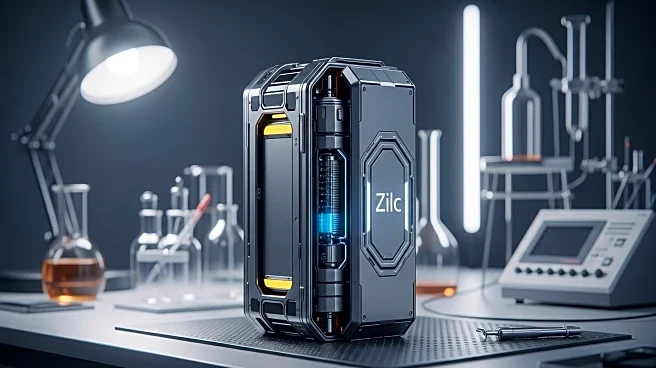What's Happening?
Small modular reactors (SMRs) are emerging as a scalable solution to meet the increasing energy demands of data centers, industrial clusters, and electrification efforts. The focus has shifted from questioning their functionality to strategizing their deployment. Governments in Europe and North America are investing billions in standardizing delivery models and infrastructure to support SMR deployment. With 127 SMR designs in development and a global pipeline exceeding 22 GW, the market is moving towards commercial readiness. SMRs offer a reliable, carbon-free power supply, especially for operations requiring 24/7 energy, and can support local grids with surplus energy. However, successful deployment depends on rapid site selection, standardized permitting pathways, and integrated site planning.
Why It's Important?
The deployment of SMRs is crucial for addressing the energy needs of large-scale operations like data centers, which are increasingly reliant on non-intermittent power sources. As traditional grid systems face limitations, SMRs provide a viable alternative for reliable and sustainable energy. This shift is significant for industries aiming to meet decarbonization goals while maintaining operational efficiency. The investment in SMRs reflects a broader commitment to low-carbon energy infrastructure, which is essential for reducing environmental impact and enhancing energy resilience. The success of SMRs could lead to a transformation in energy supply models, benefiting both economic stakeholders and environmental sustainability.
What's Next?
The next steps involve accelerating the deployment of SMRs by ensuring that site selection and permitting processes are streamlined. Governments and developers are focusing on creating standardized civil infrastructure to accommodate multiple reactor designs, which could facilitate rapid deployment. The UK’s 2050 Civil Nuclear Roadmap and proposed updates to infrastructure legislation aim to reduce approval timelines and legal risks. In the U.S., efforts are underway to reform permitting and expand domestic capacity. The alignment of policy, industry, and finance is crucial for achieving program success, with partnerships like the UK-Czech agreement highlighting the potential for large-scale SMR deployment.
Beyond the Headlines
The deployment of SMRs presents ethical and cultural dimensions, particularly in terms of public perception and acceptance of nuclear energy. The focus on underground nuclear islands to reduce visual impact and enhance security may ease local concerns. Additionally, the shift towards standardized delivery models and integrated civil infrastructure highlights the importance of collaboration between governments, operators, and investors. This approach not only reduces risks but also fosters innovation and efficiency in energy production. The long-term success of SMRs depends on maintaining investor confidence and ensuring that delivery models align with business cycles.













